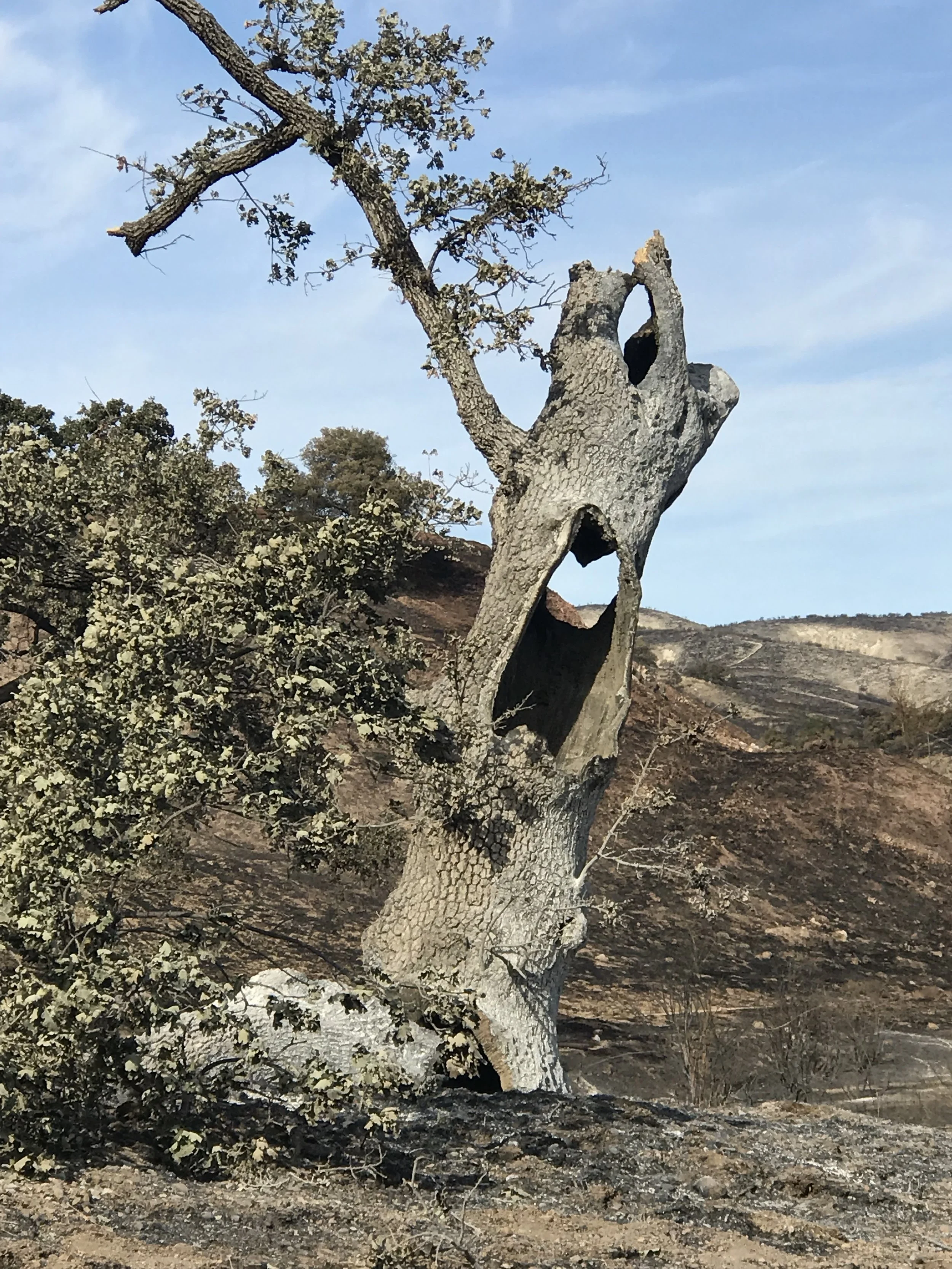The first red flag warnings of the Fall came last week - just in time for the five year anniversary of the Woolsey Fire. For those unfamiliar with that fire, it roared through the north end of LA County burning almost everything in its path from the 101 to the ocean. To see a wildland fire up close like that conveys power both awesome and awful.
Once they lifted the evacuation notice I returned home to a scorched landscape. Anxious to see the magnitude of the damage in the Las Virgenes Open Space I went for a bike ride. Solitary oaks dotted the hills. Scarred but still standing and fire pushing out of the stumps of their fallen friends and sinkholes freaked me out. Nature recovered faster than the people did. Soon the trails were open and I could witness that recovery up close.
A few months later I headed out for a ride before work and said good morning to the giant oak tree that stood watch as the trail began. It had survived largely unscathed. I’m sure it witnessed quite a bit in its century or so of life. An hour later I returned to find the oak had collapsed across the trail. A fire burned in the core of its stump. For all that time, fire had smoldered inside the trunk and weakened the oak from the inside. No one had noticed. It kept its pain hidden.
In the last five years with severe drought, torrential rain, and high winds more and more of our oak trees have collapsed. Almost all of them show signs of internal fire damage that weakened the core. On the outside they seemed healthy and vibrant, bark and generations of growth hiding the scorched core until it’s too late.
While a tad sad to see these great trees fall, one can make sense of it as part of the natural order. We can’t say the same thing when it comes to the internal damage many students around us carry with them. However, unlike trees, we can work to understand the internal difficulties and weakened cores of our students.
Teenagers resemble trees in many ways. Seemingly resilient adults often take this as an indicator of their healthy well being. Trees talk in their own ways. Humans tend not to listen however. Teenagers and their adults aren’t too different.
If you’ve ever tried talking to a teenager - you may have experienced this phenomenon. If you get more than a word in response, consider it a success. Get a few sentences (without yelling) and you won the jackpot. Even if they don’t say much, don’t stop trying (although maybe mix up your approach from time to time). Here’s the thing, most of the time a teenager wants to know you’ll actually listen before they start telling you things. They’re not about to waste their energy on someone who won’t really hear what they’re saying.
Sometimes it’s just about showing up and being there ready to listen that really matters. If you demonstrate a willingness to listen, they will eventually communicate (on their terms, in their own way). As the grown ups we need to be ready, willing, and able to listen and offer supportive check-ins. Eventually that consistency can melt the resistance of even the most wary adolescent.
Teenage mental health remains a hot topic of conversation amongst educators (as it should). I prefer small, subtle interventions to large scale activities. Yet each teacher is only one person, we can’t do it all on our own. Yet, maybe we can do more.
So go out and listen to the trees. Go out and listen to the teenagers. This way we may get a glimpse of the inner well being of that individual before any smoldering fires damage their core.

